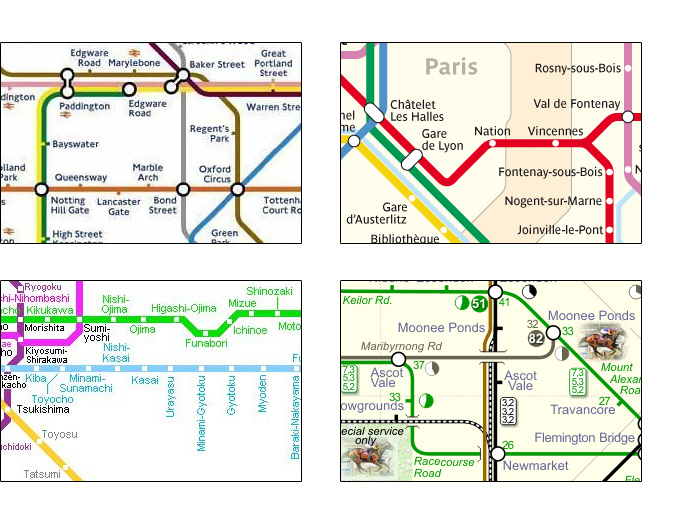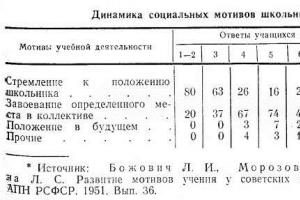I thoroughly prepared articles about the Moscow metro, including answers to questions of varying degrees of trickiness, and now, in order to be able to answer in an even more convenient way, I will make a kind of sidebar in the popular format of frequently asked questions. This faq will be useful as a supplement to the following materials about navigational and toponymic problems of the metro.
What are "platform", "station" and "line"?
I didn’t even think that this question could cause difficulties, but for people who regularly use the metro (not only the Moscow one, all the cancer that we are talking about and will talk about, to one degree or another, applies to all metro stations of the Soviet origin) and are accustomed to the idiotic navigation and an equally idiotic naming system - everything is mixed together.
A station is a stopping point on the route of a train, the tasks of which, in the context of the metro, are the ability to change lines to continue the trip and exit into the city. A platform is an engineering structure designed to allow the train to stop and passengers to board and disembark. The line is, in general case, a set of stations between which direct travel is possible (in fact, not always, but this is not relevant now).
Lines can (and should) intersect and the point at which they intersect Necessarily there will be a station with platforms to which the tracks of the corresponding lines are connected. One station. With the number of platforms corresponding to the number of lines passing through the station.
What are transitions and how are they classified?
A transition is a structure that allows a station to perform one of its functions, namely, the ability to change lines and move on. No engineering features of the implementation (length, direction, escalators, transit through platforms) affect the purpose of the crossing - the ability to change the line. There is either a transition or there is not.
And why all these truisms?
And besides, the tradition of Soviet subways - giving each platform at a station its own name and considering it a separate station - is bad. The whole world, and any other transport in Russia, does not suffer from such a disease. Lines to Vladimir, Aleksandrov and Kurovskoye arrive at different platforms of the Orekhovo-Zuevo station, but no one thought of giving each platform a personal name, and on the Vladimir and Aleksandrovskaya lines there is an Orekhovo-Zuevo station. It’s time to start distinguishing between stations and platforms in the metro, and then fully appreciate all the convenience of the correct approach.
What is so right about this approach? They called it different things and no one died.
Logic and common sense are dead. First of all, this is just idiocy. Secondly, there is elementary logic in favor of calling interconnecting platforms of different lines one station with the same name. When, having arrived at the “station” Library named after. Lenin’s man goes out into the city from the lobby with the inscription “Borovitskaya”, logic gets sick and dies. Thirdly, our metro is impossible for visitors, especially from abroad, to use, because the rest of the world knows what a station is and does it like this: 
It is more convenient to meet on platforms with different names.
And the turnstile on the bus makes you scratch your ass. A typical example of how people learned to use by-effect bad decision. When meeting at normal stations, at Paveletskaya, for example, no one gets lost. Clarifications are needed in any case, so a meeting on the Paveletskaya green line is no better and no worse than a meeting on the Aviamotornaya line at the first car from the center or on the Kitay-Gorod station at the exit to Maroseyka.
The platforms have self-explanatory names. From the name it’s immediately clear where you can go from the platform to the city.
It's a bullshit. For such orientation you need to know Moscow very well. Few Muscovites know the city well, let alone newcomers? What does the name “Sports” mean? From Okhotny Ryad you can go not only to Okhotny Ryad, but also to Bolshaya Dmitrovka. Revolution Square is much closer to the exit from Teatralnaya than from Revolution Square, the exit from Turgenevskaya is on Chistoprudny Boulevard, and so on.
The design of the stations corresponds to the names.
This is probably mainly about Pushkinskaya. And in our collective farm on Proletarskaya Street there is a monument to Ryabushinsky and for some reason this does not bother anyone. There is nothing wrong with the design not matching the name. It’s much worse that the design of many metro stations does not correspond to their purpose: no matter where you hang the diagram, it still looks like alien shit.
At the node “Okhotny Ryad-Teatralnaya-Revolution Square” there is no (direct) transition from “Okhotny Ryad” to “Revolution Square”. It’s the same story with “Alexandrovsky Sad” and “Borovitskaya”, which means these are different stations.
The transition cannot be direct, indirect, intermittent, or anything else: it either exists or it does not. Tens of thousands of people daily move from Revolution Square to Okhotny Ryad: how is this possible with a missing crossing? What, “Teatralnaya” is on the way? Here is another negative effect of different names of platforms and the veneration of each platform as an independent station. Three lines pass through the station, which should logically be called “Red Square”: blue, red and green. And people make the transition to the line, and not to the station. If the transition from the red line to the blue line passes, among other things, along the platform of the green line of the same station, then this is a peculiarity of the transition, and in general, anything can be encountered along the way: escalators, platforms of other lines, long and short corridors, turns or stairs. A person making a transition from one line to another does not care: he moves from one line to another without changing the station and without going into the city.
More about “Okhotny Ryad-Teatralnaya-Revolution Square”. There is a passage 400 meters long, which means these are different stations. The transition can't be that long, can it?
It shouldn't, in theory. But it’s quite possible. Yes, for the Moscow metro the length of the transition from “Revolution Square” to “Okhotny Ryad” is a record one. And in the Tokyo metro there is a passage longer than 500 meters, but this does not create two stations. The transition fulfills the task: it makes it possible to change the line at the station. Another example is the Kursk Station railway station. To transfer from the Gorky train to the train to Podolsk, you need to walk from 200 to 500 meters, and along the way you will come across other platforms, payment control points, and you will even have to go into the station building and buy another ticket, but the station does not change . This is how the Kursk Station was, and remains so.
And if they dig a passage from the Alexander Garden to Okhotny Ryad, will the two stations become one?
The question that plunged me into despondency and despair: I cannot imagine organizing an underground pedestrian connection between stations. Precisely stations, because a train runs between them. They will remain stations, and in this case, another metro idiocy will be added - a pedestrian backup for two lines at once. Or the first pedestrian metro line.
At stations, the platforms must be parallel and visible. What kind of station is this with perpendicular (or other) platforms?
Again, engineering implementation does not affect the intent. Digging so that all paths are visible and parallel is not only expensive, but also dangerous even for shallow stations. The nature of underground construction allows for greater freedom to place platforms in three dimensions, and they can indeed be positioned at 90-degree angles one above the other. The purpose of the station does not suffer from this: at it you can just change the line or go into the city.
Teatralnaya metro station in Moscow is located in the city center, under Teatralnaya Square. The station is located on the Zamoskvoretskaya line of the Moscow metro (green line), between stations and. The Teatralnaya metro station is connected by passages to the Okhotny Ryad and Ploshchad Revolyutsii stations. The Bolshoi and Maly theaters of Moscow are located near the Teatralnaya metro station.
The station opened on September 11, 1938. The station is located at a depth of 35 meters. Structurally, the station consists of three parallel tunnels, which are connected by passages. The cross section of each tunnel is 9.5 meters. The total width of the platform is 22.5 meters; the distance between the tracks is 25.4 meters. The height of the vault is 5.3 meters. The total length of the platform is 155 meters.
Teatralnaya station is the center of a large interchange hub. From here you can transfer to the Okhotny Ryad station on the Sokolnicheskaya line and Ploshchad Revolyutsii on the Arbatsko-Pokrovskaya line. You can get to each of these stations in two ways - through underground passages and through common ground lobbies.
The passages are located in the center of Teatralnaya, and stairs above the tracks lead to them.
Teatralnaya metro station has two above-ground lobbies.
The southern lobby of Teatralnaya is common with the Ploshchad Revolyutsii station and is located on Revolution Square.
The northern lobby of Teatralnaya is shared with the Okhotny Ryad station, the closest exit to the theater. This lobby is built into a house at the intersection of Bolshaya Dmitrovka and Teatralny Proezd streets, on the edge of Teatralnaya Square. A passage leads from this lobby to the Teatralnaya escalator.
Near the Teatralnaya metro station in Moscow there are:
- Big theater. Address: Theater Square, 1.
- State Academic Maly Theater of Russia. Address: Teatralny proezd 1.
- Russian Academic Youth Theater. Address: Theater Square, 2.
- Moscow Operetta. Bolshaya Dmitrovka street, 6.
- Moscow Art Theater named after Chekhov. Kamergersky Lane, 3.
- Moscow State Exhibition Hall. Georgievsky lane, 3.
- Red Square.
- Moscow Kremlin.
- State Historical Museum.
- Hotel Moscow. Okhotny Ryad street, 2.
- Hotel Metropol. Teatralny proezd, 2.
- TSUM. Petrovka street, 2.
Hotels near Teatralnaya metro station
There are many hotels in Moscow near the Teatralnaya metro station, the Bolshoi and Maly theaters. The main attractions of the capital, museums, theaters are located here, and therefore hotels located in this area of the city are in demand at any time of the year.
The closest hotels to this metro station are, for example, The Ritz-Carlton, Four Seasons Hotel Moscow and the Metropol Hotel. Near this station there are not only the Bolshoi Theater, but also many other popular tourist places. The Ararat Park Hyatt Hotel and the Matryoshka Hotel are also located near the Bolshoi Theater.
Near the Kremlin and Red Square - an overview for tourists heading to Moscow.
In the center of Moscow there are both expensive, luxury hotels and inexpensive hotels and hostels. If for some reason you are not satisfied with these hotels, you can certainly find a suitable hotel or apartment near the nearest metro stations at an affordable price using any online hotel search and booking service.
Dear guests of the capital! And also Muscovites (it turned out that many Muscovites are also not in the know. Yes, I myself discovered this not so long ago). That in the Moscow metro there are a lot of nightmarish, long and tiring transitions from line to line, especially in the center - I think everyone knows this. For some reason, St. Petersburg residents especially complained to me: as far as I understand, most of their crossings there are arranged according to the same principle as ours at Kitay-Gorod. But not everyone knows that sometimes this problem can be easily circumvented, you just need to know where and how. The fact is that the Moscow metro lines usually intersect under acute angle. And transitions from branch to branch in most cases are an escalator, or more often a simple staircase in the center of the hall. Going up or down the stairs is a great pleasure, especially if a crowd of people is rushing there with you, and you have sore legs, a bag on wheels or just a heavy backpack! – you find yourself in a more or less long corridor leading to the center of the hall of the neighboring station. At the same time - attention, know-how! – both of these stations very often have a common ground vestibule. And the escalators leading upstairs (here there will almost certainly be an escalator!) go out into the common room, as a rule, even before the turnstiles. That is, instead of climbing up and down stairs and walking along long, cramped corridors in a crowd of people, you can simply go to the end of the hall, go up an escalator, go down another, and now you are at the desired station. However, this opportunity is hardly advertised anywhere. The signs indicate: the exit to the city is at the end of the hall, the transition to such and such a station is in the center of the hall. Walk up the stairs, darling.
The most striking example is “Paveletskaya”. The transition from the Paveletskaya-circular to the Paveletskaya-radial seems to be the longest in Moscow. Plus, cramped, steep stairs are a trademark of the “green” line. But I haven't used it for several years. The escalator at the end of the hall leads to a round lobby, there is a second escalator literally ten steps away, and that’s it. There is one exit to the city at the roundabout, so you won’t get lost, at the radial exit there are two, at the crossing – the one that is not to the station. At the same time, on the radial one there is a sign hanging on purpose near the escalator: “Transition to the Circle Line in the center of the hall.” Yeah thanks. I know.
Or the transition "Turgenevskaya" - " Chistye Prudy" The corridor is shorter than at Paveletskaya, but uphill. The same thing: exit to the city (there is only one at both stations), from the escalator from Turgenevskaya - to the left, from Chistye Prudy, respectively - to the right, escalator down.
"Teatralnaya" - "Okhotny Ryad". This is where it gets more complicated. On Okhotny Ryad there are two exits to the city, and each time you have to remember again which of them you can go to Teatralnaya. It seems to be the one towards the Bolshoi Theater, but I'll have to check. And the “Teatralnaya” station is generally a very confusing station, it’s easy to get lost there - but, again, if you use the right escalator, you won’t have to climb stairs and wander through passages. In short, the path is proven, but needs clarification.
They say there is also a similar transition from Teatralnaya to Revolution Square, but I have never been there.
“Pushkinskaya” - “Tverskaya” - in principle, the transition there is quite convenient, but if you can’t climb the stairs AND YOU HAVE A TRAVEL PASS WITH AN UNLIMITED NUMBER OF TRIPS, or you don’t mind spending an extra trip, you can go up the escalator, and Immediately go back in and go down the escalator to the desired station. As for the travel card, this is important, because when you go upstairs, you will find yourself behind the turnstiles. It makes sense if, for example, you have a heavy, bulky load that you don’t want to carry up the stairs.
“Pushkinskaya” - “Chekhovskaya” - the second crossing is officially marked, but it cannot be said that it is much more convenient than the other: both there are stairs and corridors. Unless it is more convenient for you personally to cross at the end of the platform, and not in the center of the hall.
“Komsomolskaya” ring-radial - in principle, this can also be done, there the escalators lead into one hall, but it makes no sense: on the way to the escalators there are a lot of stairs and passages. It only makes sense if the official crossing is packed to capacity: at the exit the stairs and corridors are wider. But at the exit the crowd is usually thicker, there are three stations after all.
“Lenin Library”, the transition to “Alexandrovsky Garden” and “Arbatskaya” are two official transitions, but it is more convenient to use the one at the end of the hall. There is a wide staircase and a short passage, and in the center of the hall there is a staircase and a long narrow corridor, leading to the same passage. It's better not to go there during rush hours.
That's all I remember for now. I propose to add to it, systematize it, and maybe post it somewhere if it hasn’t already been done. I haven't found it yet.
There are several transfer stations in the Moscow metro, where it is better to go completely different from where the signs suggest you go. This allows you to save time or make the transition more comfortable.
1. Turgenevskaya -> Chistye Prudy.
Alternative way: Escalator up at the end of the station (exit to the city).
We go up the escalator, go left and see the “No passage” sign.
If you don’t want to “violate”, we pass to the right. Passage there is completely permitted. On the left we see an escalator, along which we go down to Chistye Prudy.
It takes a little longer, but most of that time is spent standing on the escalator rather than walking down a long walkway.
Plus, you don't have to climb the stairs. If you are carrying a heavy suitcase, this is very important.
2. Chistye Prudy -> Turgenevskaya.
Official way to go: down the escalator in the center of the station.
Alternative way: Escalator up at the end of the station with a sign “Exit to the city”.
We go up the escalator and go right.
We see an escalator down on the right (now there is a metal fence there - repairs are underway. The escalator is right behind it), we go down the escalator.
3. Library named after Lenin -> Arbatskaya.
Official way of crossing: stairs up in the center of the station.
Alternative way: stairs up without a sign at the end of the station.
In fact, passage through the end of the station is not prohibited and the left half of the passage is allocated for it, but there is no sign at the station, but as soon as you go up the stairs, which seem to be only for passengers going to the platform, on the left you will see signs for exits and passages. Move forward.
You will run into the same escalator, to which a long curved tunnel leads, through which you are asked to go in the official way. So much faster and shorter!
4. Lenin Library -> Alexander Garden.
Official way of crossing: the same stairs up in the center of the station.
Alternative way: the same stairs up without a sign at the end of the station.
Go up the stairs and go on the right side. There will be three passages on the right, above each of which there is a “no passage” sign. First one, then two more.
If you need a train to Mezhdunarodnaya, feel free to take the second passage to the right. If it's before Kuntsevskaya - on the third one.
You will immediately find yourself on the right platforms.
If you follow the official path, you will have to climb several stairs and spend a lot of extra time. Even though in this case you will pass under a prohibitory sign, you will not disturb anyone - there are very few people coming from the platform.
5. Theater -> Revolution Square.
Official way of crossing: stairs up in the center of the station.
We go up an escalator and immediately go down another one and find ourselves at another station.
The alternative method is much faster and more comfortable (the official method involves traveling through a long tunnel).
6. Revolution Square -> Teatralnaya.
Official way of crossing: stairs up in the center of the station.
An alternative way: an escalator at the end with a sign “Exit to the city at Revolution Square.”
We go up an escalator and immediately go down another.
Surely there are more convenient ways to transfer at other stations. If you know about them, write in the comments.
upd.: Lifehacks from readers:
hige_san : The same story on Paveletskaya from the ring to the radial. The official transition is in the center of the hall, go down and stomp along the tunnel for a long time. Unofficially, go up and down the escalator at the end. On the contrary - a similar way, the main thing is not to confuse the ends. You don’t need to cross through the exit to Paveletsky Station.
FROM THE EDITOR. What could be worse than a crowded metro in the morning or evening? And even in the summer. Suffering from the stuffiness and elbows of passengers, we do not realize that we can simply cheat and make transitions between some stations much easier and faster. ALEXEY NADEZHDIN decided to visually show several life hacks of the Moscow metro that will help save a lot of time and nerves.
There are several transfer stations in the Moscow metro, where it is better to go completely different from where the signs suggest you go. This allows you to save time or make the transition more comfortable.
Turgenevskaya -> Chistye Prudy
Alternative way: escalator up at the end of the station (exit to the city).
We go up the escalator, go left and see the “No passage” sign. We boldly pass under it and on the left we see an escalator, along which we go down to Chistye Prudy. It takes a little longer, but most of that time is spent standing on the escalator rather than walking down a long walkway. Plus, you don't have to climb the stairs. If you are carrying a heavy suitcase, this is very important. For many years, the legend of how the Circle Line of the Moscow Metro came into being has been passed down from mouth to mouth. They say that Joseph Stalin, while studying one of the reports on the development and expansion of the metro, placed a cup of coffee on the project. Naturally, after this (right in the city center area) there was a brown spot left on the diagram.
“Chistye Prudy” -> “Turgenevskaya”
Official way to go: down the escalator in the center of the station.
Alternative way: escalator up at the end of the station with a sign “Exit to the city”.
We go up the escalator and go right. We see an escalator down on the right, we go down it.
“Lenin Library” -> “Arbatskaya”
Official way of crossing: stairs up in the center of the station.
Alternative way: stairs up without a sign at the end of the station.
Surprisingly, as soon as you go up these stairs, which seem to be only for passengers going to the platform, on the left you will see signs for exits and passages. Move forward. You will run into the same escalator, to which a long curved tunnel leads, through which you are asked to go in the official way. So much faster and shorter!
For many, this will be an extremely unexpected fact, but, according to some experts, each station on the Circle Line (there are 12 in total) corresponds to the signs of the Zodiac and, moreover, divides Moscow into a kind of astrological sectors. For example, for twins - Paveletskaya station, for Sagittarius - Belorusskaya, etc.
“Lenin Library” -> “Alexandrovsky Garden”
Official way of crossing: the same stairs up in the center of the station.
Alternative way: the same stairs up without a sign at the end of the station.
Go up the stairs and go on the right side. There will be three passages on the right, above each of which there is a “no passage” sign. First one, then two more. If you need a train to Mezhdunarodnaya, feel free to take the second passage to the right. If it’s before “Kuntsevskaya” - on the third one.
You will immediately find yourself on the right platforms. If you follow the official path, you will have to climb several stairs and spend a lot of extra time.
“Teatralnaya” -> “Revolution Square”
Official way of crossing: stairs up in the center of the station.
An alternative way: an escalator at the end with a sign “Exit to the city at Revolution Square.” We go up an escalator and immediately go down another one and find ourselves at another station. The alternative method is much faster and more comfortable (the official method involves traveling through a long tunnel).
“Revolution Square” -> “Teatralnaya”
Official way of crossing: stairs up in the center of the station.
An alternative way: an escalator at the end with a sign “Exit to the city at Revolution Square.”
We go up an escalator and immediately go down another.








